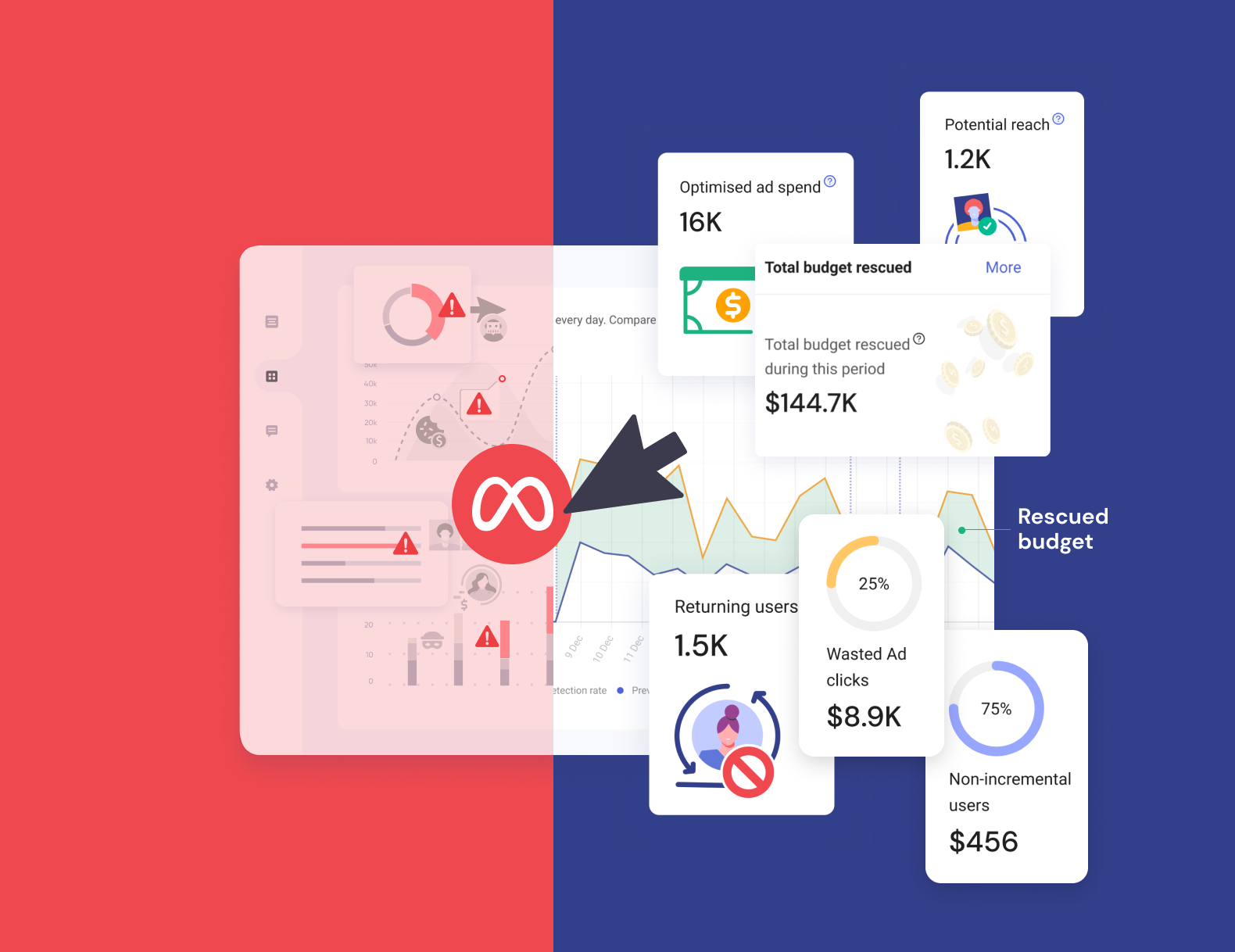What Is Domain Spoofing? How It Works and How to Stop It
.png)
Domain spoofing is one of the most damaging forms of digital ad fraud. It hijacks trust, pollutes performance data, and wastes media spend by making your ads appear on websites they were never meant for.
It’s a tactic fraudsters use to impersonate high-quality websites in order to sell low-quality or fake inventory to unsuspecting advertisers. And if you’re not actively working to prevent click fraud, you might be paying premium rates for placements that will never deliver results.
Let’s unpack how domain spoofing works, the threats it poses to your campaigns, and how to stop it with smart tactics and click fraud prevention software.
What Is Domain Spoofing in Advertising?
In digital advertising, domain spoofing refers to the practice where fraudsters falsify the domain data of a website to make it appear as if ads are being served on legitimate, high-quality domains. In reality, those ads are shown on low-quality, irrelevant, or non-existent sites; or sometimes never shown at all.
It’s a deliberate manipulation of the digital supply chain, and it's especially common in programmatic advertising, where real-time bidding happens at scale.
Why Domain Spoofing Is a Threat to Your Campaigns
1. Wasted ad spend on fake inventory
Advertisers often pay a premium to appear on trusted, brand-safe domains. But when fraudsters spoof these domains, your budget is diverted to fake or low-quality inventory, offering zero return. This is not just inefficient; it’s theft. And without click fraud protection, you may never know it's happening.
2. Skewed performance data and attribution
When impressions or clicks come from spoofed domains, the metrics in your dashboards are lying. Your cost-per-click (CPC) may look fine, but your conversion rate plummets. It becomes impossible to make accurate optimisations when the underlying data is corrupted.
3. Brand safety and trust issues
Domain spoofing doesn’t just waste your spend, it puts your brand reputation on the line. Ads that appear on shady, offensive, or irrelevant sites can damage consumer trust. In a worst-case scenario, you could even be unknowingly funding disinformation or illegal content.
How Domain Spoofing Works in Digital Advertising
1. Fake domains impersonating reputable publishers
Fraudsters create websites or ad tags that masquerade as premium domains like news publishers, entertainment brands, or niche communities. When an ad exchange receives the bid request, it appears to come from a trusted domain, even though it doesn’t.
2. Manipulating ad exchanges and SSPs
Fraudsters insert spoofed domain data into programmatic bid requests by exploiting weaknesses in supply-side platforms (SSPs) and exchanges. These falsified requests trick demand-side platforms (DSPs) into bidding for inventory they believe to be legitimate.
3. Selling low-quality inventory as premium ad space
Once spoofed domains are in play, bad actors sell this fake inventory to advertisers at premium rates. Your campaigns may report normal impressions and click-through rates, but you're paying for placement on sites no human will ever see.
How to Prevent Domain Spoofing in Your Ad Campaigns
1. Work with verified inventory and DSPs
Partner only with transparent, reputable DSPs and supply partners that enforce domain verification and use mechanisms like ads.txt and app-ads.txt. These standards were created to reduce fraud by authorising which vendors can sell inventory on behalf of publishers.
2. Use real-time click fraud detection software
Click fraud isn’t just about bots, it includes invalid traffic caused by domain spoofing. Solutions like TrafficGuard’s click fraud prevention software use real-time detection and machine learning to identify and block fake domains before a bid is even placed.
Learn more about how bots, spoofed traffic, and fake inventory operate in the TrafficGuard Help Centre.
3. Leverage real-time analytics and monitoring
Continuous monitoring is essential. Use tools that provide granular traffic insights, such as click source, time to conversion, and post-click behaviour. This level of visibility helps you detect anomalies, redirect budget, and improve campaign optimisation.
Turn Visibility into Victory:
Domain spoofing thrives in opacity. But with the right visibility, protection, and tools, you can outsmart the fraudsters, protect your brand, and make every click count.
Ready to gut-check your campaigns? Use our Invalid Traffic Calculator to find out how much you're losing to fraud, then take back control.
FAQs & Key Takeaways
- How common is domain spoofing in programmatic advertising?
More common than you think. According to industry reports, it accounts for a significant percentage of fraud in open exchanges. Without proper safeguards, most advertisers will encounter it.
- Can domain spoofing affect my campaign’s ROAS?
Absolutely. If you’re paying for premium placement but getting fake impressions or low-quality clicks, your return on ad spend (ROAS) will tank. Clean data equals reliable performance.
- What tools can help detect and block domain spoofing?
Dedicated click fraud prevention tools like TrafficGuard proactively detect spoofed traffic, filter out invalid clicks, and give you full transparency into campaign health.
Get started - it's free
You can set up a TrafficGuard account in minutes, so we’ll be protecting your campaigns before you can say ‘sky-high ROI’.
Subscribe
Subscribe now to get all the latest news and insights on digital advertising, machine learning and ad fraud.








